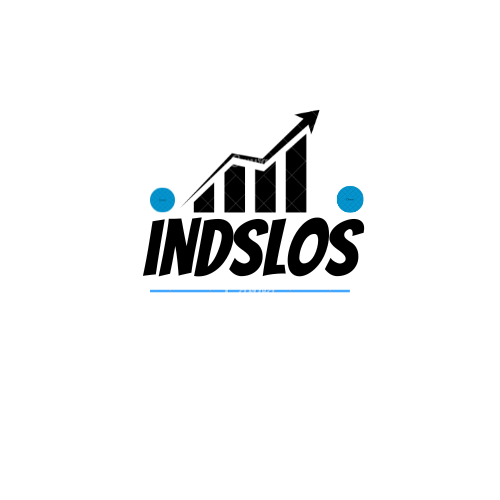The present day price proposition of insurtechs
Insurtechs know how to attain the blessings of digital: they devise simple, intuitive journeys and products for the cease customer, with a excessive diploma of transparency and fast techniques in claims and customer service.
It could seem nearly impossible for traditional incumbents to reap the equal stage of consumer-centricity, transparency, and pace.
Whilst insurtechs are no doubt reworking the industry, incumbents and vendors might also view them as enablers or challengers, relying on the insurtech’s commercial enterprise model: B2C, B2B, or B2B2C.
B2C insurtechs are challengers
B2C insurtechs compete without delay with incumbents to underwrite rates for private clients. But, their purchaser and product awareness has a tendency to be narrower than that of incumbents, limiting their disruption of the market. In 2021, B2C insurtechs accounted for handiest 10 percent of the property and casualty direct market, totaling roughly €4 billion in annual rates (show off). Handling preferred agents (MGAs) captured about seventy five percent of this extent, with B2C underwriters capturing the rest.
Exhibit 1
We attempt to offer people with disabilities equal get right of entry to to our website. In case you would love statistics approximately this content we are able to be glad to work with you. Please electronic mail us at: McKinsey_Website_Accessibility@mckinsey.Com
B2B insurtechs are enablers
As enterprise utilities, B2B insurtechs help incumbents upgrade their price chains with virtual property and competencies. As an example, some offer virtual claims or fraud solutions based on advanced analytics and intuitive, user-friendly apps.
B2B insurtechs can be positioned as specialists, 1/3-celebration administrators, or maybe cease-to-quit answers or functionality carriers. The growth potential for this model is strong, as it may create a win–win–win state of affairs for customers, incumbents, and insurtechs.
B2B2C insurtechs are enablers and challengers
B2B2C insurtechs open the doorways to new markets in adjacent industries by means of integrating coverage into the point of sale for car dealers, tour corporations, tech providers, retail shops, and banks.
Through their B2B companions, those insurtechs make bigger the pool of ability stop clients. Whilst the market continues to be inside the early ranges, the future looks promising. For example, our revel in shows that significant income can be generated from prolonged-guarantee insurance merchandise, as a minimum for corresponding commercial enterprise models.
The destiny outlook for european insurtechs—and the capability fee at stake
The future trajectory of the insurtech marketplace is closely determined with the aid of investment flows.
In step with McKinsey analysis, ecu insurtechs these days attract approximately 20 percentage of worldwide insurtech investment volumes—a share that has remained consistent over the last five years.
European insurtechs had a record 12 months in 2021, with greater than €3 billion in funding. Whilst the overall wide variety of offers declined, deal size grew across all ranges, with a higher percentage of past due-stage deals compared with previous years.
European insurtechs had been collectively worth approximately €forty billion within the same 12 months.
While the enterprise efficiently bounced lower back from the preliminary disruption of the COVID-19 pandemic, a new set of challenges have emerged. Thecurrent macroeconomic environment is characterized by means of rising hobby prices, a long time-high inflation, and ongoing geopolitical unrest.
Throughout industries, tech businesses have been falling short of income goals and investor expectations—a phenomenon that started in public markets in 2021 and unfold to personal markets. Insurtechs were not proof against this asset overvaluation.
As an instance, B2C insurtechs with stability sheet business fashions (particularly people with excessive loss ratios or restricted clarity on the sustainability of key economic drivers) couldn’t meet the high expectations set with the aid of their software as a service–like tech counterparts.
As a right away result of this trend, each generation organizations and insurtechs have seen a massive decline in valuations. The Nasdaq fell by means of 30 percentage within the first half of of 2022,
and some insurtechs are experiencing valuation decreases of as much as ninety five percentage (in excessive cases) relative to their all-time highs in 2021. This dynamic is barely much less said in Europe than inside the america.
Investment volumes are also shrinking, mainly in later-stage financing and IPOs. US undertaking capitalist investment decreased from $ninety four billion within the fourth quarter of 2021 to $36 billion inside the fourth area of 2022.
In Europe, the corresponding decrease was €29 billion to €thirteen billion. Nonetheless, there is still a few marketplace pastime in Europe, and traders are searching out new deals, even though greater selectively.
The longer-term outlook for european insurtechs is greater advantageous. If insurtechs observe a similar cost seize trajectory as fintechs, which today account for about 20 percent of the marketplace capitalization of conventional banks,
insurtechs could generate more or less €200 billion of value in 2030—5 times the contemporary marketplace price. While this fast boom is conceivable, it would require annual investment of about €five billion, that’s considerably higher than 2021 (approximately €3 billion) and 2022 stages (approximately €2 billion).
Critical enablers for price capture
To seize the whole value at stake, leaders of insurtechs and incumbents alike will need to mobilize stakeholders across the whole enterprise surroundings and embark on systematic packages to boost their overall performance. That is in particular critical at some point of the dimensions-up segment, whilst insurtechs are maximum probable to fail.
Whilst attracting investment and triumphing new enterprise continue to be the priorities, efforts must also consciousness on developing the subsequent enablers:
Near collaboration between incumbents and insurtechs.Via embracing a symbiotic relationship, incumbents can advantage from digital acceleration, whilst insurtechs advantage access to capital, professionalization, and scale.
Supportive ecosystems and networks.Insurtechs can attention on cultivating their access to talent, networks of potential B2B partners, and destiny customers to construct a robust foundation for destiny strategic opportunities
Customer-orientated regulation that fosters innovation.Suitable regulatory frameworks could make it simpler for insurtechs to broaden scalable business fashions in home and global markets while making sure stability and patron protection.
Ecu insurtechs have extremely good increase capability. But first, they may first want to comfy their runway with improved costs and liquidity and increase the resilience of their commercial enterprise fashions. In a unstable and unsure environment, the winners might be those that efficaciously navigate the headwinds and supply superior first-rate which can become a lasting supply of competitive benefit for years to come.









Leave a Reply